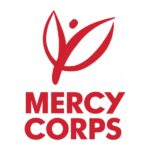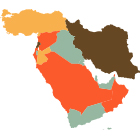Evaluating Youth-Oriented Innovative Employment and Livelihoods Programming – Mercy Corps Iraq
Background:
Prior to 2014, Iraq had one of the lowest employment-to-total population ratios in the region. This has since been exacerbated by Iraq’s displacement crisis.
In youth employment, Iraq is experiencing a gradual increase in the proportion of unemployed youth, specifically among university graduates and holders of higher degrees. Statistics reveal the official unemployment rate stood at an average of 13.74% of the total labour force in 2020, 10% for the male youth group and 30.59% for the female youth group, compared to world averages of 6.43% and 8.40%, respectively. Direct correlation between unemployment and political instability, further supports the idea that youth unemployment and labour market participation have been exacerbated by the Iraqi crises
Internally displaced and refugee women and girls are particularly affected; their ability to participate in livelihood activities is limited. In fact, studies show that in 2018, only 42% of displaced and refugee women in KRI were engaged in livelihood activities. This percentage is primarily comprised of female-headed households, whose husbands are unable to work, or who received training or obtained degrees prior to displacement.
Refugees, IDPs, and host communities attempt to protect their women and girls by controlling their mobility and confining them to their homes. As such, livelihood programming must take into account gendered dynamics in order to ensure female participation in these activities.
The main barriers that women face include mobility restrictions due to long travel time and costs of commuting, safety and security risks, societal and cultural pressures which often confine women and girls to their homes, a lack of educational backgrounds, limited job opportunities, and time-consuming childcare responsibilities.
Women in female-led households do not have easy access to job opportunities due to their domestic and childcare responsibilities and the stigma around working as a widow or divorcee. That being said, as men are often the main breadwinners in both KRI and the whole of Iraq, supporting their access to livelihoods is vital for the recovery of refugee, IDP and host families, as is simultaneously giving more importance to improving women’s livelihoods engagement.
Triangle’s Assignment:
Triangle’s assessment helped Mercy Corps determine the overall impact of its livelihoods programming for internally displaced people, host communities and Syrian refugees in Iraq.
The assessment focused on the relevance, effectiveness, efficiency, impact, and sustainability of program activities in Sulaymaniyah and Erbil governorates, and identify areas of improvement and learning from program outcomes.
In particular, this evaluation covered Mercy Corps’ YIELDS programme, undertaking an overall assessment of implementation and performance. In particular Triangle:
- Evaluated the impact of the project through an assessment of the results, taking into account the context, the proposal and the monitoring and evaluation framework of the project.
- Evaluated the implementation of the project, including methodology, monitoring and evaluation (M&E), documentation, risks and mitigations.
- Evaluated coordination within the Mercy Corps, including governance, implementation, communications, sharing of information and management with local partners.
- Evaluated the added value of a two-pronged approach in ensuring livelihoods programming is effective and sustainable.
- Provided key lessons learned and recommendations to improve future actions.
Project:
Evaluating Youth-Oriented Innovative Employment and Livelihoods Programming – Mercy Corps Iraq

Duration:
December 2021 – February 2022
Iraq
